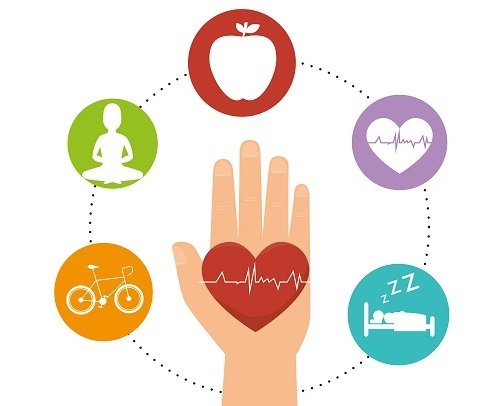🌱🌊🍲 Discover the secret to healthy kidneys! Learn how to nourish your body and protect your precious organs. 🧡🌞👉 Read more now! 👀📚👉
Updated at: 2025-05-21 13:07:40 (5 months ago by Melkisedeck Leon Shine)
```html
Protecting Your Kidneys: A Comprehensive Guide to Renal Health
The kidneys, vital organs responsible for waste filtration, blood pressure regulation, and electrolyte balance, are often overlooked until dysfunction manifests. Neglecting renal health can lead to severe complications. This guide provides a proactive, evidence-based approach to preventing renal disease, promoting long-term well-being. Key concepts explored include the application of holistic health principles, the impact of lifestyle choices on renal function, and the importance of preventative healthcare.
Strategies for Optimal Renal Function
Maintaining healthy kidneys requires a multifaceted approach integrating lifestyle modifications and regular medical evaluations. This section outlines key strategies for preserving renal health.
1. Hydration and Renal Clearance: The Role of Fluid Intake
Adequate hydration is crucial for optimal renal function. Water facilitates the excretion of metabolic waste products, reducing the risk of nephrolithiasis (kidney stone formation). The Institute of Medicine recommends an average daily fluid intake of approximately 15.5 cups for men and 11.5 cups for women, although this can vary depending on individual factors such as activity level, climate, and overall health. Dehydration places significant stress on the kidneys, potentially impacting their ability to filter effectively. Maintaining adequate hydration is a cornerstone of preventative renal care.
2. Nutritional Strategies for Renal Health: Dietary Interventions
Dietary choices significantly impact renal function. A balanced diet rich in fruits, vegetables, whole grains, and lean protein sources provides essential nutrients while minimizing strain on the kidneys. Limiting processed foods, sugary beverages, and excessive sodium intake is paramount. The DASH (Dietary Approaches to Stop Hypertension) diet, for instance, has been shown to effectively lower blood pressure, a crucial factor in reducing the risk of chronic kidney disease. Incorporating kidney-friendly foods such as berries and leafy greens further supports renal health. Dietary management is a cornerstone of preventing renal dysfunction.
3. Sodium Restriction: Mitigating Hypertension-Induced Renal Damage
Excessive sodium intake contributes to hypertension, a major risk factor for chronic kidney disease. Hypertension directly damages renal vasculature, impairing filtration. Reducing sodium intake through mindful food preparation, limiting processed foods, and opting for fresh ingredients is essential. The JNC 8 guidelines emphasize the importance of sodium control in managing hypertension and protecting renal function. Dietary modifications aimed at reducing sodium intake can significantly impact renal health outcomes.
4. Weight Management and Renal Function: The Impact of Body Mass Index
Maintaining a healthy weight is crucial for reducing the burden on the kidneys. Obesity is associated with increased glomerular filtration rate, accelerating renal damage. Regular physical activity and a balanced diet contribute to healthy weight management. This is in line with the principles of the Health Belief Model, where perceived susceptibility to disease influences preventative behaviors. Weight management reduces stress on the kidneys, minimizing the risk of developing renal complications.
5. Smoking Cessation: Protecting Renal Integrity from Tobacco's Effects
Smoking significantly impairs renal function through vasoconstriction and oxidative stress. Tobacco use accelerates the progression of chronic kidney disease and increases the risk of end-stage renal disease. Cessation significantly improves renal outcomes and overall health. This aligns with the principles of the Transtheoretical Model, which emphasizes stages of change in behavior modification. Support systems and cessation programs enhance successful smoking cessation, safeguarding renal health.
6. Blood Pressure Monitoring: Preserving Renal Vascular Health
Regular blood pressure monitoring and management are vital for preserving renal vascular integrity. Hypertension damages renal blood vessels, compromising filtration capacity. The Seventh Report of the Joint National Committee on Prevention, Detection, Evaluation, and Treatment of High Blood Pressure (JNC 7) provides guidelines for blood pressure management. Early detection and intervention, often involving lifestyle modifications and medication, are crucial for preventing irreversible renal damage.
7. Glycemic Control: Preventing Diabetic Nephropathy
Diabetes mellitus is a leading cause of chronic kidney disease. Hyperglycemia induces renal damage through multiple pathways, leading to diabetic nephropathy. Maintaining stable blood glucose levels through a balanced diet, regular exercise, and medication, when necessary, is essential. The American Diabetes Association (ADA) guidelines provide comprehensive recommendations for managing diabetes and preventing kidney complications. Tight glycemic control is a cornerstone of preventing diabetic nephropathy.
8. Judicious Analgesic Use: Minimizing Nephrotoxicity
Overuse of nonsteroidal anti-inflammatory drugs (NSAIDs) can induce nephrotoxicity. NSAIDs impair renal blood flow and glomerular filtration. Using NSAIDs sparingly, according to prescribed dosages, and exploring alternative pain management strategies are vital. Consultation with healthcare professionals is crucial before prolonged NSAID use. Careful analgesic use is essential for protecting renal function.
9. Infection Prevention: Reducing the Risk of Acute Pyelonephritis
Urinary tract infections (UTIs) can ascend to the kidneys, causing acute pyelonephritis. Good hygiene practices, including thorough handwashing and prompt UTI treatment, minimize the risk of kidney infection. Prompt medical attention for any suspected UTI is crucial to preventing renal complications.
10. Physical Activity and Renal Health: The Benefits of Exercise
Regular physical activity enhances overall health, including renal function. Exercise promotes healthy weight management, improves blood circulation, and reduces the risk of comorbidities like hypertension and diabetes. The American Heart Association recommends at least 150 minutes of moderate-intensity aerobic exercise per week for adults. Regular exercise promotes better overall health and supports renal function.
11. Alcohol Moderation: Protecting Renal Tissue from Ethanol-Induced Injury
Excessive alcohol consumption is nephrotoxic. Chronic alcohol abuse damages renal parenchyma, impairing function. Limiting alcohol intake or abstaining entirely is advisable to protect renal health. Moderate alcohol consumption guidelines should be followed if choosing to drink alcohol. Moderate alcohol intake or abstinence is recommended to minimize potential renal damage.
12. Sleep Hygiene: Optimizing Renal Recovery and Function
Adequate sleep is essential for overall health and renal function. Sleep deprivation elevates blood pressure and negatively impacts renal recovery. Aiming for 7-8 hours of quality sleep nightly supports optimal renal function. Sufficient sleep allows for restorative processes crucial for kidney health.
13. Preventative Healthcare: Early Detection and Intervention
Regular check-ups with healthcare providers, including routine blood and urine tests, enable early detection of renal dysfunction. Early intervention is crucial for effective management and improved outcomes. Preventative care is essential for preserving renal health.
14. Stress Management Techniques: Reducing Psychosocial Renal Burden
Chronic stress can negatively impact kidney function. Stress management techniques, such as mindfulness, yoga, or social support, mitigate the negative effects of stress on renal health. Stress reduction promotes overall well-being and supports healthy renal function.
15. Health Literacy and Advocacy: Promoting Renal Health Awareness
Promoting kidney health awareness through education and advocacy empowers individuals to make informed choices and encourages positive changes in renal health outcomes. Community education initiatives raise awareness and foster proactive renal health behaviors.
Conclusion and Recommendations
Protecting renal health is a lifelong commitment. Adopting these strategies, emphasizing preventative measures, and seeking timely medical attention are crucial for minimizing the risk of renal dysfunction. Further research is needed to refine preventative strategies and develop targeted interventions for specific high-risk populations. Early detection, combined with proactive lifestyle changes, can significantly improve long-term renal outcomes and overall quality of life. The impact of these recommendations extends beyond individual well-being, potentially reducing the socioeconomic burden associated with chronic kidney disease. The applicability of these strategies is broad, affecting individuals across diverse backgrounds and health conditions.
Reader Pool:
What are your perspectives on the interplay between lifestyle choices and the long-term health of the kidneys?
```




